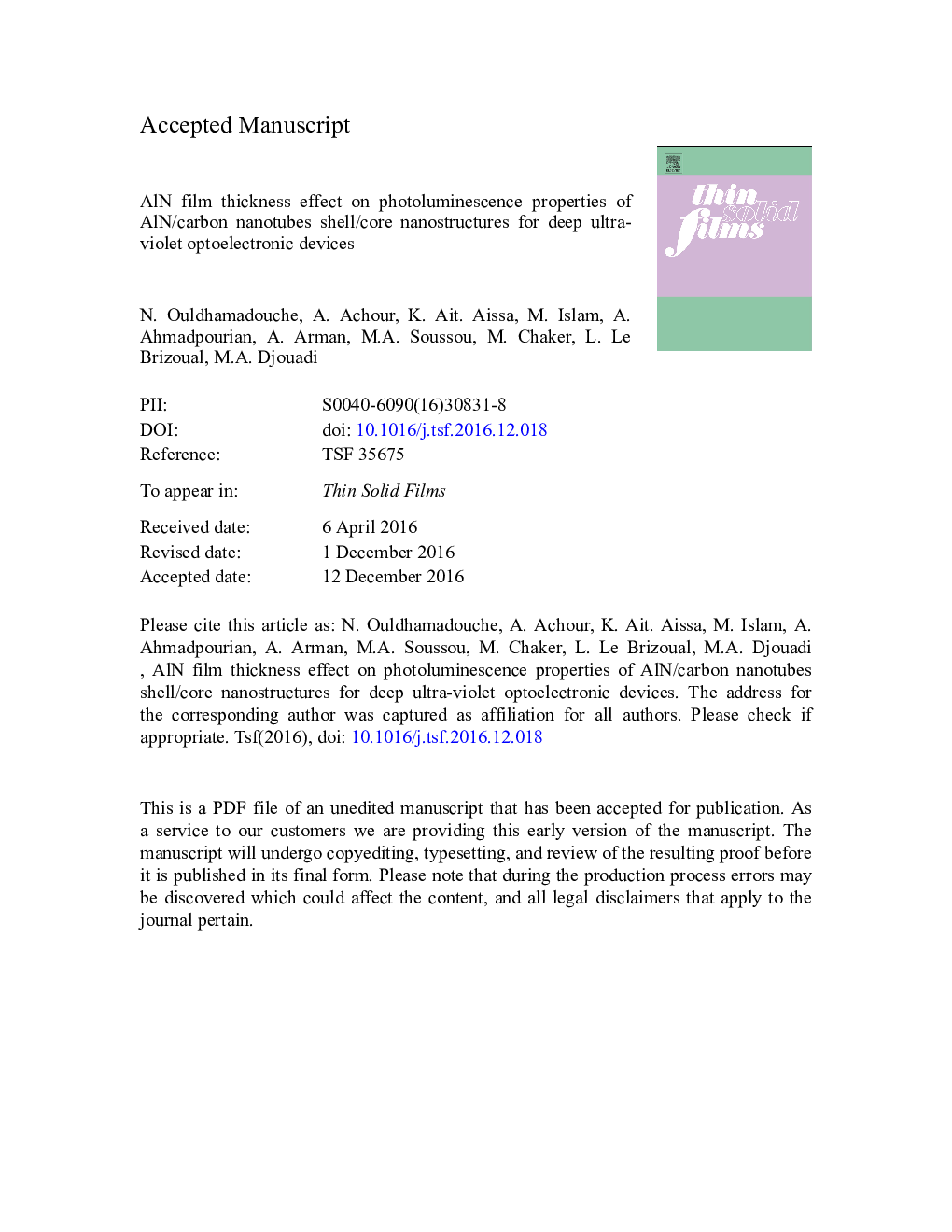| Article ID | Journal | Published Year | Pages | File Type |
|---|---|---|---|---|
| 5466381 | Thin Solid Films | 2017 | 24 Pages |
Abstract
Aluminum nitride (AlN) nanostructures are very attractive in various optoelectronic applications such as deep ultraviolet light emitting devices. The fabrication of these AlN nanostructures with good crystalline quality and compatibility in line with other micro-fabrication processes has significant importance for practical applications. AlN films of different thickness values were deposited via DC reactive magnetron sputtering over vertically aligned multiwalled carbon nanotube (CNTs) arrays to obtain AlN/CNTs vertically-aligned shell/core nanostructure assembly. Such hybrid nanostructures were characterized using scanning electron microscope, transmission electron microscope, X-ray diffraction, Raman spectroscopy and time-resolved photoluminescence spectroscope (TR-PL) techniques. The results indicated that AlN/CNTs have a nanorods structure morphology with good AlN crystalline quality. The PL measurements revealed a maximum increase in the luminescent intensity of the exciton band in case of AlN/CNTs with 600Â nm thick AlN layer, which is many orders of magnitude higher than that of AlN film produced over silicon substrate. It is anticipated that synergistic effects of CNTs and AlN through an increase in the specific surface area and oxygen-induced defects cause enhancement in the photoluminescence properties, making these hybrid nanostructures a promising candidate for optoelectronic applications.
Keywords
Related Topics
Physical Sciences and Engineering
Materials Science
Nanotechnology
Authors
N. Ouldhamadouche, A. Achour, K. Ait. Aissa, M. Islam, A. Ahmadpourian, A. Arman, M.A. Soussou, M. Chaker, L. Le Brizoual, M.A. Djouadi,
